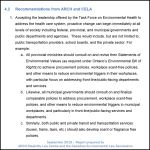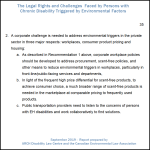…
The UK has released their Clean Air Strategy 2019 document and it contains some groundbreaking measures that, if implemented, will have very positive impacts on the environment and our health.
It encompasses many areas of air pollution, including indoor air pollutants for the 1st time in any meaningful way, which as NOAA recently pointed out, have as large an impact on outdoor air pollution as vehicle exhaust!
The few news reports I saw did mention air “fresheners” and perfumes, with some building materials, but didn’t get into details. I had to dig through the document and what follows is most of what pertains to our interests here, being seriously sensitive to indoor pollutants.
I’m sure that other sources will focus on the regular types of outdoor pollutants quite well, while mostly ignoring the indoor products and materials, so I will not touch upon them, except for a few illustration screenshots from the report.
I’ve added very little of my own commentary. It’s almost entirely copied and pasted (and reformatted) from their document, so you can see for yourself what their plans are regarding NMVOCs (non-methane volatile organic compounds) from consumer products and materials that leave so many of us disabled and housebound, and unfortunately, far too rarely in a home that protects us from exposures and contributes to our well-being.
Among other types of pollutants, the executive summary of the report includes:
…
Chapter 6: Action to reduce emissions at home
Many people are unaware that emissions in the home increase personal exposure to pollutants and contribute significantly to our overall national emissions.
Burning wood and coal in open fires and stoves makes up 38% of the UK’s primary emissions of fine particulate matter (PM2.5). Harmful sulphur dioxide (SO2) is emitted by coal burned in open fires.
Non-methane volatile organic compounds (NMVOCs) from a wide variety of chemicals that are found in carpets, upholstery, paint, cleaning, fragrance, and personal care products are another significant source of pollution.
We will:
Continue reading →










